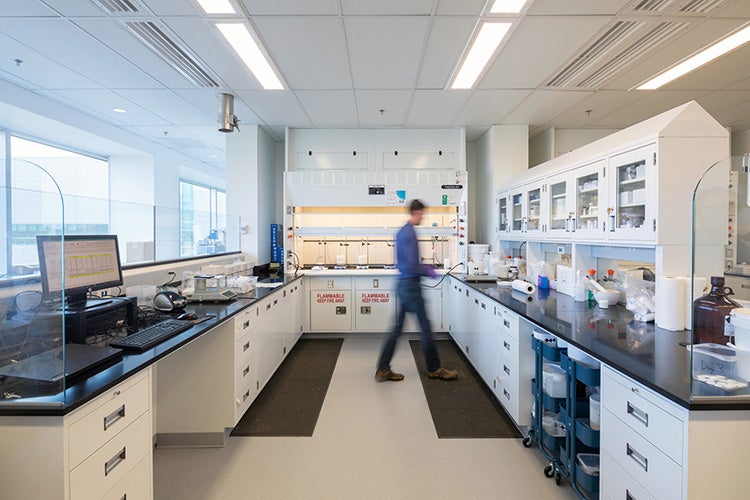Creating Cohesive LED Lighting within the Laboratory Environment

The fast and furious way in which LEDs have become a viable solution for the laboratory environment — without giving pause for the industry to develop standards — has resulted in some missteps that have caused problems with premature failures, flicker, and poor colour quality. In this article, Fred Mason Jr. and Karen Murphy highlight some criteria that should be considered when incorporating LED lighting into the laboratory environment. A few excerpts from the piece follow:
On the Importance of LED Performance in the Lab Setting
Unlike prior lamp technologies, spectral power distribution curves for LED products vary greatly. Consistent, accurate colour rendering throughout the laboratory environment (across worktops and within hoods) can be critical in the research process, especially where test strips and sample evaluations rely on colour assessments. It is important that the colour quality and colour consistency of electric lighting is addressed when designing and servicing light fixtures in these environments.
On Task-Ambient Lighting in the Lab
Light levels needed on laboratory benchtops can often provide sufficient illumination for adjacent service corridors without the need for additional fixtures. Lighting designers refer to this design approach as task-ambient design. This design method is extremely effective in laboratories where high illumination levels are needed in select, defined zones that are typically adjacent to corridor zones with low illumination needs.
On Integrating Lab Equipment Lighting
Physical integration of the LED luminaire within the lab equipment is important. Ventilation and heat sinks are important for conducting heat away from the LED module. Although service access is not as frequent, it is still needed. Access should be designed with personnel safety in mind.
On Overall Impact of LEDs
It is difficult to overstate the impact that LED technology has made in such a short amount of time. This relatively new technology has also introduced new lighting metrics and maintenance protocols. As the breadth of product continues to grow, continued emphasis on standardization will lead to environments with cohesive lighting strategies, contributing to the laboratory mission.
Creating Cohesive LED Lighting within the Laboratory Environment

